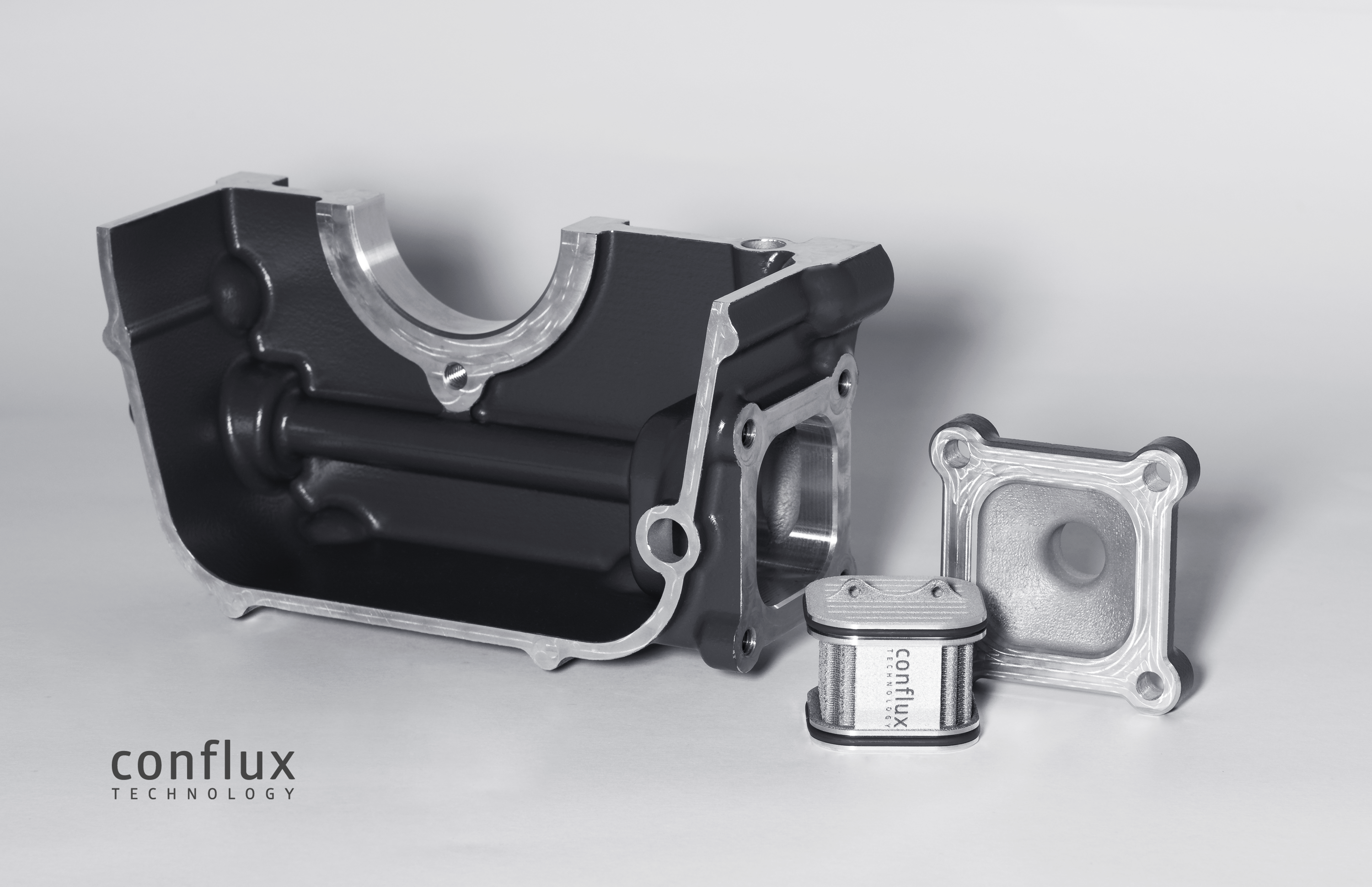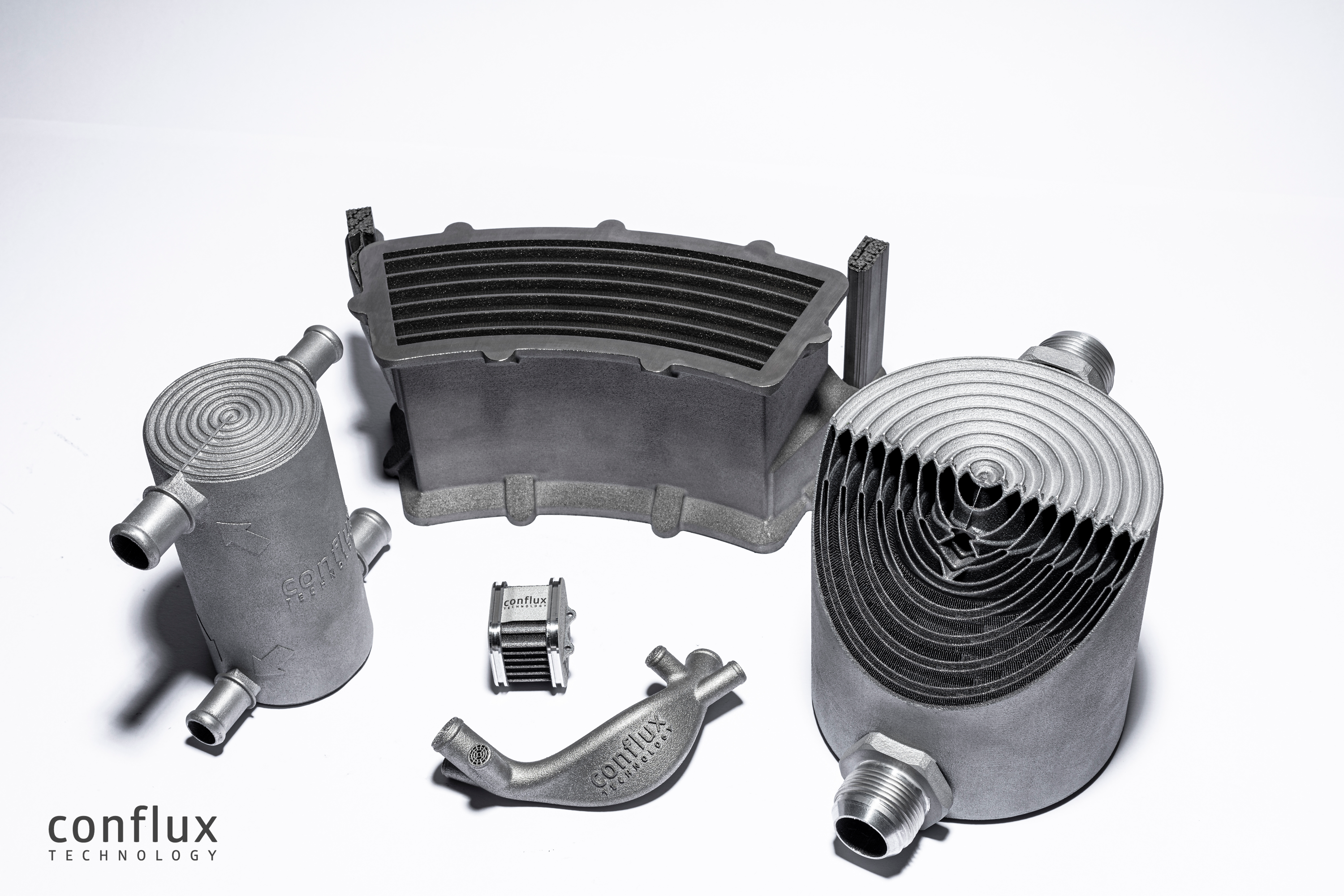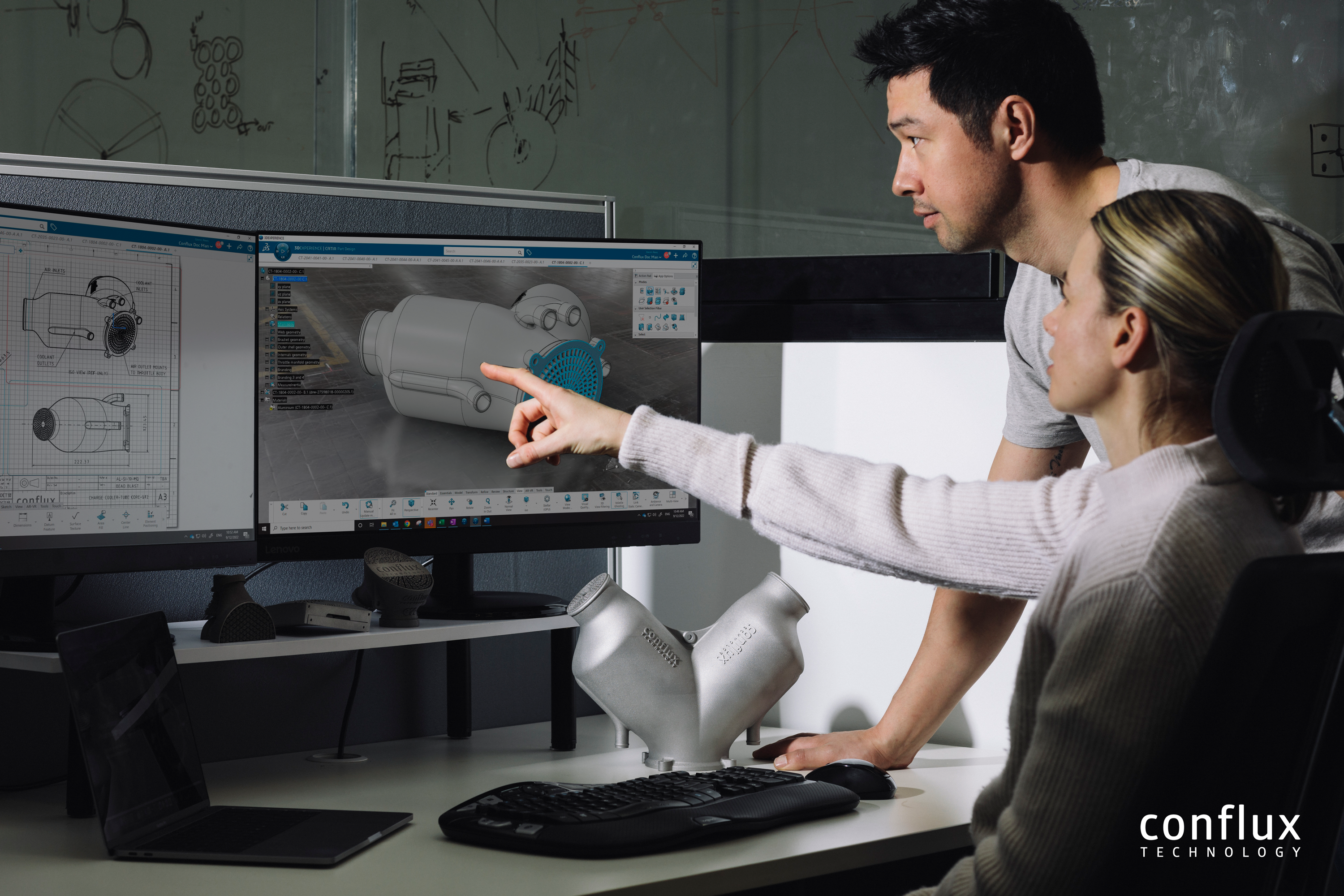As additive manufacturing (AM) becomes sufficiently industrialized for end part production at scale, the industry has entered a phase in which the technology is being applied to very specific applications where its value makes the most sense. 3D printing venture capital firm AM Ventures is a key player in cultivating this trend, having invested in a variety of startups that fulfill these niches.
Among them is Conflux Technology, a developer of 3D printed heat exchangers and other thermal solutions, who could have an outsized impact on AM and the world beyond. To learn more, we spoke to CEO and Founder Michael Fuller, who was able to catch us up to speed since we last interviewed him in 2021.
Redefining Heat Exchange in Motorsports with 3D Printing
Fuller got his start in the world of motorsports, where he worked as a design engineer and manager for teams that have competed in Formula 1, the World Rally Championship, and the Le Mans 24-hour race. Unlike some of us, who’ve meandered from interest to interest throughout our lives, Fuller had always been passionate about racing. And when, as a young kid in Australia, he began pen-palling his favorite teams, he was essentially handed a script that could guide him through his career.
“As a young kid, my dad encouraged me to draft a letter to send to the racing teams that I was passionately following as a fan in Europe, because I’d been saying I wanted to be a race car engineer and designer for a couple of years. So, I wrote this letter and sent it over to all of the heads of the Formula 1 teams and a few of them wrote back,” Fuller recalled. “They said, ‘Look, if you want to design the cars, then you’ll need to go and get a mechanical engineering degree or an aerospace degree and then start working in the lower formula. Then, come over to Europe and we’ll talk then. So that’s what I did.”
However, once he decided to head back to Australia for family reasons, he was left without a career script and had to begin writing his own. The world of European motorsports had taught Fuller how to endure a grueling schedule, while feeding his appetite for stimulating and challenging work. He’d also been an early adopter of AM and understood its implications for improving heat transfer. So, sitting at home with a broken ankle and a 10-week recovery time, Fuller got to designing what he thought was the ideal heat exchanger, only possible with 3D printing.
“In order to commercialize the patented heat exchanger design that I’d pursued, I would need a lot of capital and people that were smarter and more capable in a number of areas related to establishing and operating a business. So, I got some co-founders on board, and I found AM Ventures as a strategic investor,” Fuller said.
What Makes an Ideal Heat Exchanger?
Conflux has created a number of heat exchangers and other thermal solutions that make full use of AM’s advantages. This includes consolidating parts into single, 3D printed assemblies, reducing weight, and intricate geometries that improve performance.

Specifically, AM allows for designs that are able to balance the trade-offs between heat exchange and pressure drop. A heat exchanger with a high surface area enables greater heat transfer but may be inefficient as the flow restriction across the device may be too high. The opposite is true of a device with low surface area. AM is able to get the best of both words through the production of previously impossible designs.
Conflux in 2023
Those who have been following Conflux are well-aware of the startup’s technology. By optimizing the designs of thermals systems, it’s possible to make those systems as efficient as possible. In turn, less energy is wasted, which means something like a motor can operate for longer periods of time on a single charge, tank of gas, or other input. This also means overall fewer emissions.
Fuller’s background may be in motor sports, but the applications of his products extend well beyond performance racing. 3D printed thermal solutions can be used in nearly any industry one can imagine, from cooling rocket engines and hydrogen aircraft in aerospace to batteries in EVs or microchips in server farms.
Cooling Solutions for Electronics
Though automotive and aerospace tend to be critical verticals for most AM companies, it may be in electronics where the value of AM for cooling can be most quickly realized. Due to the size of electronic devices, it’s possible to 3D print larger batches of components at once, thus lowering the overall price of the product.

Varying sizes and styles of 3D printed heat exchangers.
“Microelectronics cooling is of particular interest because there are some really good fundamental fits. The cost for complexity for microelectronics can be very high. If you look at the cents per cold plate, fan, or heat exchanger that are in microelectronics cooling, the geometry doesn’t scale down with the size. It stays pretty crude and low resolution,” Fuller explained. “Whereas we’re able to bring much higher resolution at smaller scales. And then you have some other fundamental benefits around bringing production to the thousands of units within a single build. You can have things three-dimensionally nested and have some good economics to play with.”
These benefits of 3D printing are then converging with the developments, or lack thereof, in the electronics space, where, for instance, manufacturers are hitting thermal limits that they can’t surpass.
“They’re building next generation chips that are able to do more work, but there’s some real strong innovation that’s required to get the heat away from the chips and to achieve the necessary watts per square millimeter. And we’re right in the mix there doing that with our R&D work on vapor chamber and commercial cold plate manufacturing. There’s an asymptote that we can see in terms of power consumption in microelectronics around the world over the coming decades even,” Fuller said.
Increasing Automation to Lower Costs
Like other companies that are targeting very niche applications, such as Vectorflow, Conflux is attempting to balance custom and standard, configurable products. As demonstrated with the firm’s cartridge heat exchanger product, it’s possible to instantly enhance a system’s energy by dropping in a Conflux semi-standard, 3D printed heat exchanger, which will come at a lower cost than if the device were made entirely custom by Conflux. The company has also developed a library of geometries that it can apply to various jobs to further streamline its workflow.

A 3D printed cartridge-style heat exchanger.
The next stage, then, is to further drive down costs by increasing automation, from the pre-production to post-production stages, and modularizing the workflow so that it can be deployed close to customers globally. On the front end, this means training an AI to convert a customer’s requirements into an easy-to-process request that includes boundary conditions, such as flow, temperature, and performance. For pre- and post-processing of the actual print jobs, this means automating the manual handling between stations. This also includes applying software to post-processing machines so that they perform their de-powdering operations in the most efficient manner possible, a technique we’ve seen pursued by Solukon. Conflux is even exploring the use of automation for marketing and sales.

Conflux design for AM.
“We need to reduce our sales cycles and increase the one-to-one, long and technical business-to-business sales cycles,” Fuller said. “We need to try and decouple some of the elements there and get a lot of information into our customers hands while they’re making purchase decisions that don’t require a lot of back and forth with us. This is how it scales.”
Growing with Continued Investment
To achieve the next stage of growth, Conflux is in the process of seeking new investments, in which AM Ventures play an important role. Principal Philip Schultheiss explained, “Over the past few years, we are very impressed by the exceptional work accomplished by Michael’s team in honing the design and manufacturing skills necessary to scale the technology and make it available to customers globally. We are eager to assist Conflux in this next phase, alongside our existing and prospective co-investors.”
In a world of disrupted climate and peak fossil fuels, energy efficiency is king. It is partially for this reason that AM Ventures chose to invest in the Aussie startup.
“Addressing climate change hinges on the ability to lower energy consumption and heighten efficiency. To this end, Michael and his team are engineering the subsequent generation of heat exchangers through the application of additive manufacturing, rising to meet this formidable challenge. Their unique expertise in heat transfer and additive manufacturing, coupled with an extraordinary team ethos, convinced us that Conflux would make a significant addition to our investment portfolio,” Schultheiss said. “As we look to the future, we anticipate that Conflux’s heat exchangers will be increasingly embraced across industries, including general manufacturing, electronics, aerospace, electric vehicles and automotive, particularly where high performance and superior efficiency are critical.”
AM Ventures is the Networking Sponsor for the 7th annual Additive Manufacturing Strategies (AMS) conference, taking place from February 6-8 at The Metropolitan Pavilion, New York. This in-person exclusive gathering promises rich discussion and networking, assembling AM visionaries from around the globe. For potential sponsors and speakers, reach out to info@3drholdings.com or jeff@3dprint.com. All images courtesy of Conflux Technologies.
Subscribe to Our Email Newsletter
Stay up-to-date on all the latest news from the 3D printing industry and receive information and offers from third party vendors.
You May Also Like
Further Understanding of 3D Printing Design at ADDITIV Design World
ADDITIV is back once again! This time, the virtual platform for additive manufacturing will be holding the first-ever edition of ADDITIV Design World on May 23rd from 9:00 AM –...
3D Printer Maker EVO-tech Reborn as NEVO3D — Once More With Feeling
EVO-tech was a 3D printing service and original equipment manufacturer established in 2013 and based in Schörfling am Attersee, Austria. The company produced high-quality material extrusion systems featuring linear bearings,...
3D Systems Brings 3D Printed PEEK Cranial Implant to the U.S. with FDA Clearance
For more than 10 years, 3D Systems (NYSE:DDD) has worked hand-in-hand with surgeons to plan over 150,000 patient-specific cases, and develop more than two million instruments and implants from its...
CDFAM Returns to Berlin for Second Annual Symposium
The second CDFAM Computational Design Symposium is scheduled for May 7-8, 2024, in Berlin, and will convene leading experts in computational design across all scales. Building upon the first event...































